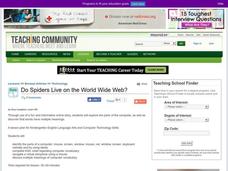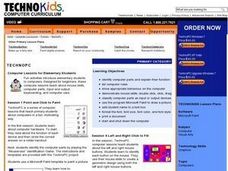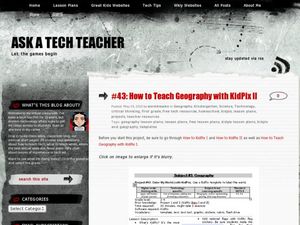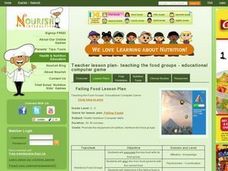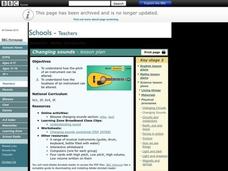Curated OER
Basic Computer Hardware and Software
Students see pictures and learn vocabulary of basic computer hardware and software. In this computers lesson plan, students are shown pictures of a screen, mouse, keyboard, and other computer parts that they should know and fill out a...
Curated OER
How to keep a timecard in Excel
Young scholars fill out a timecard of family activities in Microsoft Excel. In this Excel lesson plan, students use the program to fill in times they do various activities with their families.
Curated OER
A Holiday Newsletter In MS Word For Elementary School
Students produce a holiday newsletter using a software program. In this holiday newsletter activity, students use a software template to write a newsletter. They fill in the template with appropriate information and pictures.
Curated OER
Keyboarding Technique
Students use correct keyboarding technique to improve speed and accuracy. They respond to verbal comments, such as "Be sure you are keeping your fingers on home row." They choose one technique component to work on and fill it in on...
Curated OER
Do Spiders Live on the World Wide Web?
Explore the parts of a computer and discover that words have multiple meanings. Your class will verbally identify the parts of a computer including the mouse, screen, window, net, and keyboard. They will also complete a KWL chart,...
Curated OER
Keyboarding - Nothing but Complaints
Students work in pairs to prepare a legal complaint against a fictional character. They download a template from the Internet and use it to fill out a formal complaint.
Curated OER
Techno PC: Computer Lessons for Elementary Students
Students explore computer science by participating in mini activities. In this graphic design lesson, identify the different components on a personal computer and define their purpose. Students utilize Microsoft Paint to create a digital...
Curated OER
Making CD's from MIDI Compositions
Students complete their own composition (ABA song form, C Major scale, 32-60 measures) using the keyboard and sequencing software on the computer to playback the song. They fill in answers in their workbooks and watch how to transfer...
Curated OER
How to Teach Geography with KidPix II
Young scholars use the computer program KidPix II to color a map of the world. In this world map lesson plan, students fill in different colors for different continents that are told to them on the program KidPix II.
Curated OER
Using Context Clues
Teach your third graders how to find the meanings of words using context clues. Using this reading instructional activity, discuss how readers can find the meaning of a word by using the sentences around it. They then complete a...
Curated OER
The World of Work: Job Applications
Students use online resources and activities to examine the vocabulary of a job application. In this job application lesson, students review and take sample online job readiness exams. Students read a publication about completing a job...
Curated OER
Keyboard and the Grand Staff
Students explore the treble and bass staffs, naming the lines, spaces, and locating middle C. Individually, students complete a word game and then compare their answers with a partner. They sight-read the grand staff and explore ways...
Curated OER
Where I Live…
Second graders explore their community. In this social studies lesson plan, 2nd graders use Internet tools to locate their community on a map and then locate where they live.
Curated OER
What Did I Touch Today?
Students investigate germs and how they travel. They graph the places in the classroom that have been touch by students to determine which five places have had the most contact. They write stories from a germ's point of view.
Curated OER
Counting Fat in Our Diet
Students take home a fat diary and, with the help of their parents, keep track of how much fat they ingest every day. The fat diary should include entries for each day, as well as items eaten, servings, and total fat intake.
Curated OER
Falling Food Lesson
Young scholars examine personal health by defining the five food groups. In this food pyramid instructional activity, students discuss the importance of each food group and write them on the board. Young scholars utilize the Internet to...
Curated OER
Robot Earth
Students construct a simple robotic energy transformer. In this space science lesson, students explain how energy is transformed from one form to another. They identify the different uses of robotic devices.
Curated OER
Changing Sounds
Students listen to sound. In this changing sounds instructional activity, students play instruments to help them hear volume and pitch. Students use the interactive whiteboard to experiment how change can make sounds go higher or lower.
Curated OER
Calendar
Second graders design/format and create a specific calendar month (maybe the present one?) choosing and using one of the formats in the Scholastic Super Print program.
Curated OER
Earth Day Trash Survey Unit
Students develop a questionnaire to distribute via e-mail or Web page forms that visitors fill out based on the data they gathered during their clean-up activities.
Curated OER
Local Heart Rates
Students determine the type of data needed to test their inferences. As homework, they check and record heart rates of fellow students, teachers and family members. During their next class period, students enter all data into the database.






